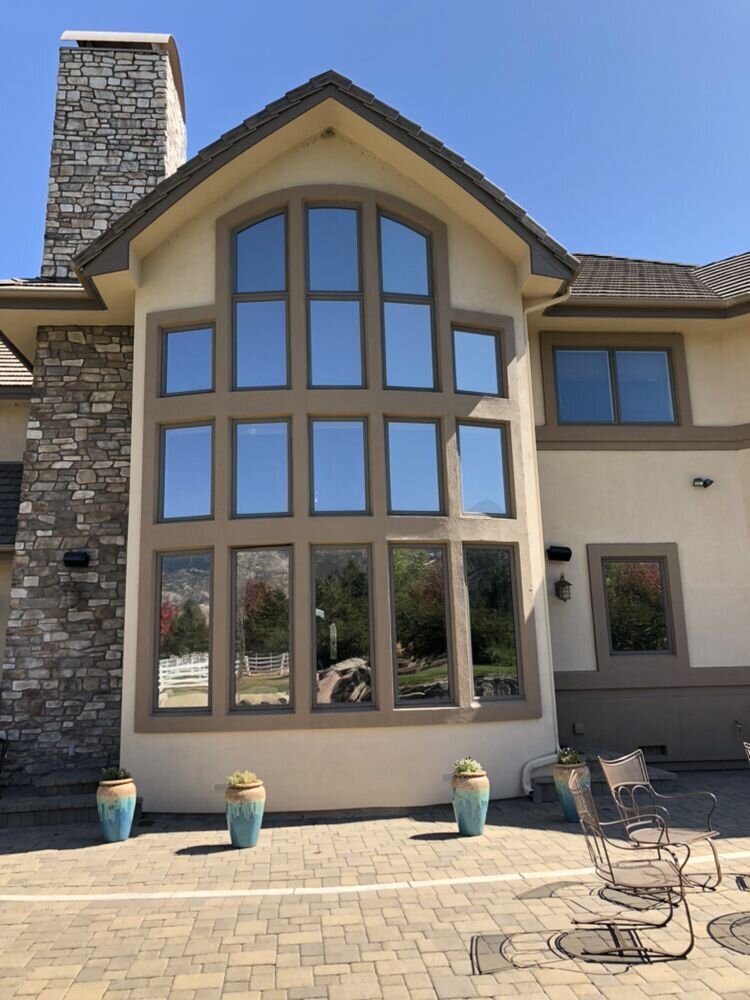How Residential Home Window Tinting Enhances Your Home's Energy Efficiency
Residential window tinting offers an engaging remedy for house owners looking for to boost energy efficiency within their living rooms. By using specialized movies to windows, it efficiently minimizes warm transfer, thereby supporting interior temperature levels and reducing the requirement for excessive heating or cooling.
Comprehending Window Tinting
Comprehending home window tinting is important for house owners seeking to improve both comfort and energy performance in their space. Residential Window Tint. Window tinting involves the application of a slim movie to the inside or outside surface area of glass home windows. This film can substantially modulate the quantity of sunshine and warmth that gets in a home, therefore influencing indoor environment problems
There are numerous types of home window tinting movies offered, each with distinctive properties. The performance of window tinting is often determined by its Visible Light Transmission (VLT) portion, which suggests how much light can pass with the film.
Advantages of Energy Performance
Home window tinting not only improves looks but additionally plays a substantial function in boosting energy performance within domestic areas. By decreasing warmth transfer through windows, colored films create a much more secure indoor environment, which can lead to considerable reductions in power consumption for cooling and heating. This energy effectiveness converts into reduced energy bills, supplying home owners with substantial lasting financial savings.

In addition, window tinting boosts the convenience of living rooms. By minimizing glow and blocking hazardous UV rays, colored home windows develop an even more enjoyable setting, which can cause improved health for occupants. The defense versus UV rays likewise helps maintain furniture and flooring from fading, adding to the durability of household things.
How Tinting Works
Tinting films run through a mix of advanced products and modern technologies created to control the amount of solar power going into a home. Largely composed of polyester, these films typically incorporate metal or ceramic fragments that show and soak up warmth. This twin ability permits them to considerably lower the penetration of ultraviolet (UV) rays and infrared radiation while allowing visible light to go through.
The effectiveness of window tinting is gauged by its solar warm gain coefficient (SHGC), which shows just how much solar power is transmitted via the window. Reduced SHGC worths are preferable as they represent greater heat being rejected. In addition, window tints can include a selection of shades, allowing property owners to personalize their visual choices while enhancing energy effectiveness.
Furthermore, these films work as a barrier, preventing warm loss throughout cooler months by showing indoor heat back right into the living space. This thermal insulation effect complements the cooling advantages obtained throughout warmer months, adding to a well balanced indoor environment year-round. By taking care of solar power effectively, domestic window tinting not only boosts convenience yet additionally plays an essential duty in reducing energy consumption and lowering utility costs.
Picking the Right Color

There are various types of home window movies available, consisting of dyed, metalized, and ceramic. Ceramic films offer exceptional warmth control without endangering exposure and are very durable, making them a popular choice.
Visible light transmission (VLT) is another crucial aspect, as it suggests the quantity of all-natural light that can pass with the colored glass. House owners need to select a tint with a VLT that matches their lights choices while still giving ample glow reduction.
Additionally, assessing the solar heat gain coefficient (SHGC) can aid identify just how well a color can block heat from sunlight. A reduced SHGC indicates better heat control, ultimately enhancing power effectiveness.
Installation and Upkeep Tips
Appropriate installation and upkeep are crucial components in taking full advantage of the benefits of residential home window tinting. To achieve optimum results, it is advisable to hire a certified professional for setup. This guarantees that the color is applied properly, avoiding air bubbles, creases, or misalignment that can compromise efficiency. Experts also make use of specialized tools and strategies, which can enhance the longevity and efficiency of the tint.
Complying with installment, maintenance is vital to lengthen the life of the home window movie. It is recommended to wait at least 30 days before cleaning up the Full Report tinted windows to enable the sticky to cure completely.
Furthermore, routine examinations are beneficial. Look for any peeling or bubbling, which could suggest incorrect setup or use gradually - Residential Window Tint. Resolving these problems immediately can stop more damages and preserve energy efficiency. By sticking to these installment and upkeep pointers, home owners can guarantee their window tinting remains to provide significant power financial savings and convenience for many years to come.
Verdict
In verdict, domestic home window tinting serves as an efficient remedy for enhancing power effectiveness within homes. By minimizing heat transfer and blocking unsafe UV rays, window films add to lower energy intake and improved indoor comfort.
Home window tinting entails the you could check here application of a thin film to the inside or outside surface area of glass windows. By decreasing warm transfer via windows, tinted films produce a much more secure interior environment, which can lead to significant reductions in energy usage for home heating and air conditioning.The performance of window tinting is gauged by its solar warmth gain coefficient (SHGC), which indicates how much solar energy is transmitted through the home window. By taking care of solar power properly, residential window tinting not only enhances comfort however likewise plays a crucial duty in lowering power consumption and decreasing energy costs.
By lowering warmth transfer and obstructing unsafe UV rays, window films contribute to lower energy intake and boosted interior comfort.